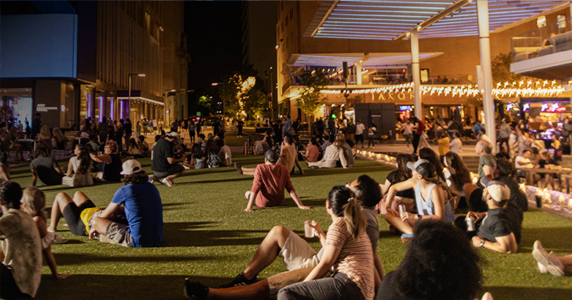What if economic developers, chambers of commerce, and politicians stopped focusing on businesses, industry sectors, and jobs? Heretical concept? Hear me out.
Have you ever seen a business, or a job for that matter, walk down the street, visit a coffee shop or coach the little league team? Nope – me neither. People do those things. People start businesses, spend money, and invest in their communities.
So, what if we thought less about a faceless business sector and more about the people who make up those businesses – humans with faces, like me and you.
This is not a crazy pipedream. In fact, it was the central theme at the PA Economic Development Association Fall 2023 Conference. Thought leaders from across the Mid-Atlantic gathered to celebrate that shift towards people and place-based development strategies which is taking hold across the Country. And that is a good thing.
I joined with them this month to share best practices. This shift towards people and place is bringing together Chambers, economic developers, and other key stakeholders in more meaningful and important ways.

I have always been fascinated with the factors that influence people’s impression, their likes, and dislikes of certain communities. Over the years I have interviewed friends and clients, asking why they chose to live and work where they do.
Of course, they cite market conditions, costs, access to customers, family influence and job chasing. But there is more to it than that.
If cost were the only factor, New York City would be a desolate wasteland. If coffee shops were the solution, stands to reason we should see young hipsters sipping lattés on every street corner in America. We know it’s not that simple.
While everyone would like to live and work in great places, the subtleties that surround “place-based” development strategies are not as apparent.
To understand the power of place better, it’s useful to reflect on where we’ve been.
For thousands of years, people grew their own food. We each were self-sustained micro economies. As we industrialized, things became more connected and reliant on others. Economies became more complex. Large production facilities with even larger workforces were required to meet demand. That meant specific places with natural or other resources were needed to make the production work.
Over the past few decades and amplified by the pandemic, technology, robotics coupled with the scary AI are disrupting things big time. Together they are detangling people from a traditional workplace and places in general. We are more mobile, productive, and doing more with less. We can pick places to live and work less on need and more on want and lifestyle.
As a result, economic developers and chambers are finding themselves in the business of people attraction. Our existing businesses need them, our school systems want them, our tax base requires more of them.

While it might seem like a very different approach, it really isn’t. Substitute industry sector words like manufacturing, life sciences and businesses services for people sectors like visitors, students, investors, and employees. Replace business park and highway construction with housing, parks, and recreational infrastructure development. You get the idea.
The place-based approach requires us to do more and in different ways. Build those roads and buildings yes, but also build communities in which people want to live. Then work to match your community with the right people sector. You a big city? Focus on the “Big City Friendlies” and “Late Night Clubbers.” You a Mountain Town? Target the “Flannel Wearers” or the “Front Porch Sitters.”
Tell your unique story, be authentic, turn locals into advocates. As the focus turns to people and people become more mobile, the opportunity is there for small towns and big cities to attract new people; the people who start businesses, join existing businesses, and who become long term community residents and investors.
For my full slide deck presented at the PEDA Fall 2023 Conference, click here.



